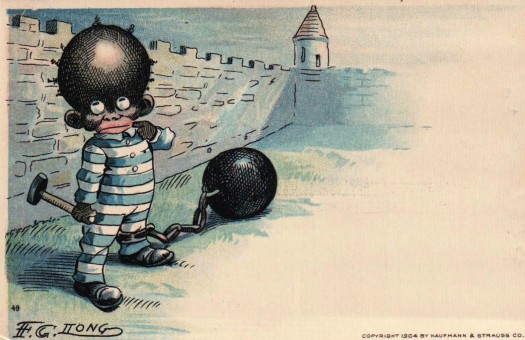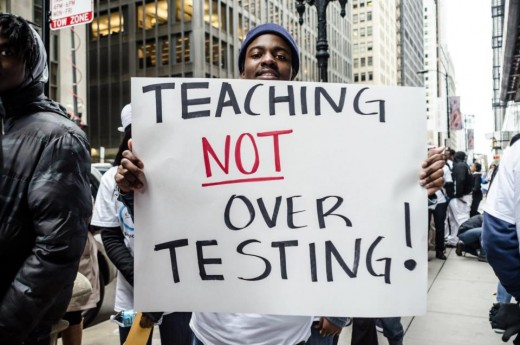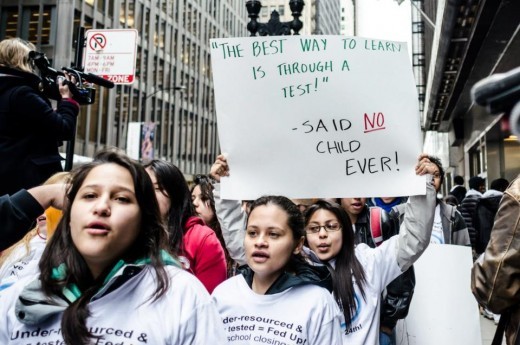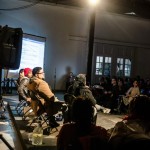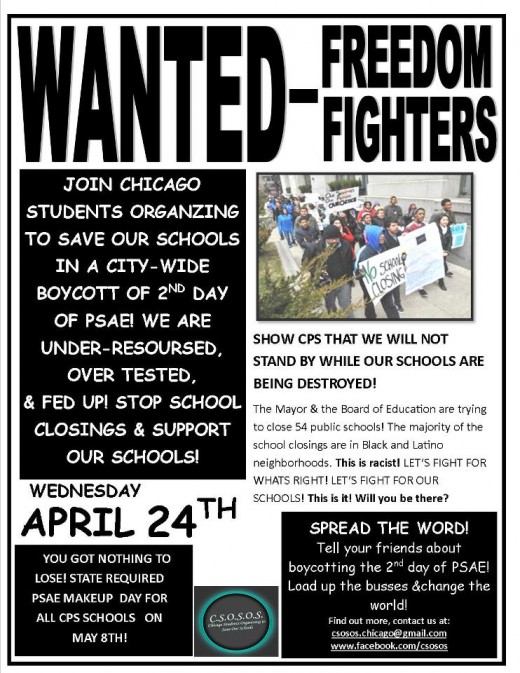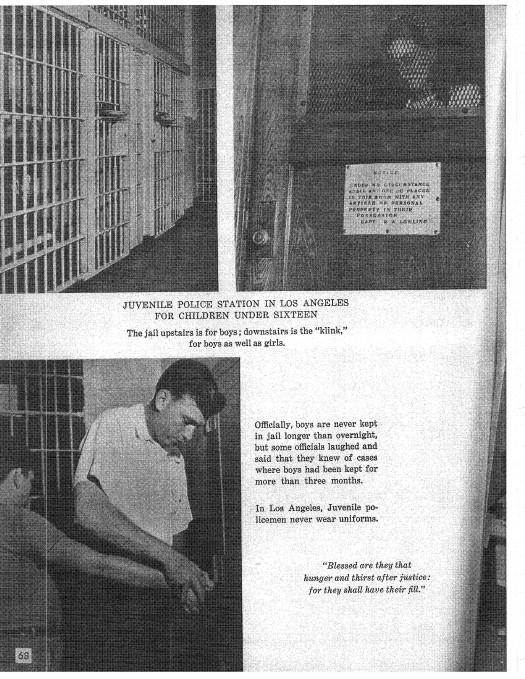Since I started this blog, I have wanted to feature the voices of the young organizers and activists who I have the pleasure to work with and to know. Today, I am thrilled to feature a post by Michael Johnson who is a community organizer with the Resident Association of Greater Englewood (RAGE). Michael offers his unique take on some of the rhetoric that has been adopted by opponents of Chicago Public School closures in the past few weeks. This blog post originated from a Facebook status that I read on Michael’s page. I was intrigued by his words and asked if he would consider expanding them into a post here on Prison Culture. These words represent Michael’s views.
I have been closely following the latest round of school closings as a community organizer with the Resident Association of Greater Englewood (RAGE). Throughout the process, I have noticed a tendency by those arguing against the closures to rely on particular arguments to make their case. These arguments usually have several overlapping components. School closing opponents argue that there is a need for quality education for ALL Chicago children and they also emphasize the costs of destabilizing student’s learning environments. In addition to these arguments, some community leaders, parents, and educators have also articulated their concerns about the safety of the children who will have to attend new schools in the fall. Time and again, the idea of safety has been raised and with it the spectre of gangs as the primary threat has loomed. I worry that by framing the closures as primarily a threat to student safety, we are missing an opportunity to discuss our opposition on educational, civic and economic grounds.
The report backs on the many CPS hearings and CTU press conferences as well as media coverage have leaned towards a very particular narrative that has been emerging as the dominant one. In making the case against closing schools in Chicago, some have suggested (as I mentioned earlier) that this is a bad idea because it puts students at risk of gang violence. Further, the suggestion is made that CPS could not possibly protect these students from the “gangs” in the territory around their new schools (sources 1).
This argument has been advanced by some youth leaders as well as some community organizers. I don’t dismiss the validity of the real concerns being expressed. However I find myself conflicted as I listen to some of this rhetoric being used by the opponents of school closures. I fear that they are inadvertently adopting the city and the police’s language and framing around the “gang problem” in Chicago.
I have witnessed opponents of school closures fall into the same problematic terminology framing these communities as “gang infested areas.”(source 2, 3,4). Whatever good will and sympathy might be engendered by this description of some neighborhoods, these come at a great cost as well.
The very young people who this movement is seeking to invest in end up being demonized instead. Ultimately, it leaves our young people and our communities more marginalized in the long-term. The “gang” argument plays into the deeply embedded racist fears with the gang (read black youth) as predators that must be cleared out to ensure better educational opportunity. These youth that are so called “infesting” our community are human and worth engaging constructively. They come through the same systems, communities, families and kitchen tables as the current elementary school students that so many are rightly fighting for by opposing school closures.
I worry that an over-reliance on claims of safety rooted in a fear of gang violence is sowing the seeds of further oppression of black and brown youth in Chicago. I fear that any potential victories will purely be a “faux progress” based in the politics of fear. Fear of the “other” and criminalization will only serve to isolate our children further and strengthen the school to prison pipeline. It’s a poor trade off, more policing instead of quality educational opportunities that serve the entire community. This mode of operating begs for crumbs not seeing a future in our schools or our children beyond just getting them out alive. The nearsightedness of this perspective ignores the common root of violence and educational inequality. It ignores the history and context that has facilitated this environment: where the poorest areas, most violent areas, areas of the highest rate of lead poisoning, foreclosures and school closures are all mostly African American. This city is entrenched in a socio-economic system akin to Apartheid and the time to address the redistribution of resources is now, not blaming systemic poverty and the failure of institutions on the children they have failed (source 5 6 7).
I also wonder about the organizing beyond just fighting closures. These schools have failed due to mismanagement on the local and national levels. How do we move beyond counter-positioning and move into the offensive, utilizing schools as we see fit, pushing for quality education and innovation in our own image? See: Freedom University Freedom Schools, CFS, Detroit FS These are some of the liberatory questions that I think we need to answer in this historical moment in Chicago.

